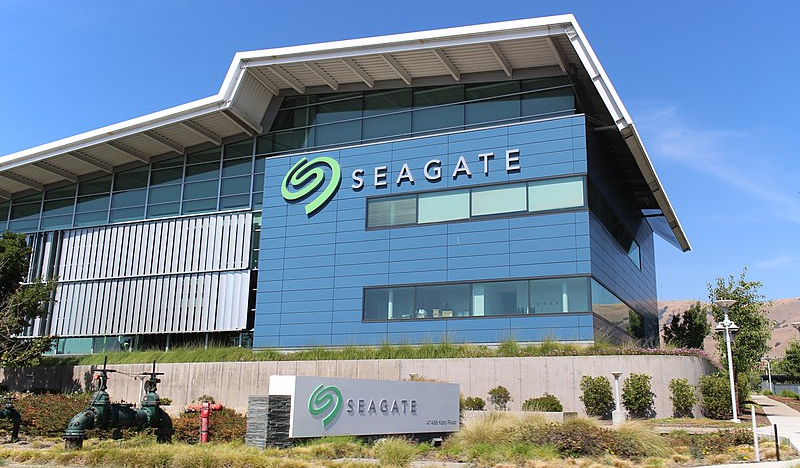 INFRA
INFRA
 INFRA
INFRA
 INFRA
INFRA
Shares of Seagate Technology Holdings PLC, a major maker of hard drives for enterprise and cloud data centers, jumped more than 5% today after the company posted quarterly results that topped analyst expectations.
Seagate has been in business for more than four decades. The company surpassed $100 million in revenues within just a few years of launching by winning a deal to supply data storage hardware for the IBM XT, one of the earliest personal computers. Seagate has been a major supplier of hard drives ever since, providing equipment for cloud operators, enterprises and the consumer market.
Seagate’s revenue climbed to $3.12 billion in the first quarter ended Oct. 1, up from $2.31 billion a year ago. Analysts polled for the FactSet consensus estimate had anticipated $3 billion in revenues.
Seagate’s net income fared even better in the quarter. It more than doubled year-over-year, to $526 million. The profit increase boosted Seagate’s adjusted earnings per share to $2.35 a share, above the $2.21 per share that analysts were expecting.
Seagate credited its strong quarterly results partly to the continued growth of its mass capacity revenue segment, which covers the company’s core enterprise and hyperscale storage products. Mass capacity sales surpassed $2 billion for the first time in the first quarter, meaning the segment now accounts for close to two-thirds of Seagate’s revenue.
The company reported a decline in its consumer storage business, which supplies hard drives and flash devices for devices such as personal computers. But Seagate reported that the decline was partly offset by demand for its Mission Critical product line. Those hard drives are targeted at corporate data centers and offer a high degree of reliability.
Seagate believes that its earnings momentum will continue into the next quarter. The company is forecasting revenue of $2.95 billion to $3.25 billion for the three months through December. The high end of the forecast range exceeds the $3.0 billion consensus analyst estimate. As for the next quarter’s adjusted earnings, Seagate is anticipating $2.13 per share.
Seagate is counting on the continued increase in the volume of digital data to help drive future revenue growth. According to International Data Corp. research cited by the company, the total amount of information stored digitally will reach 175 zettabytes in 2025, 58 times the total amount of storage capacity the company has shipped to date. Moreover, it’s estimated that so-called mass capacity hard drives of the kind Seagate sells will be used to store more than two-thirds of the new data generated through 2026.
But Seagate isn’t relying on the increase in digital data alone to support top line growth. The company is also actively investing in the development of new hard drive technology.
Two of the technologies at the center of Seagate’s growth plans are Mach.2 and HAMR, which stands for heat-assisted magnetic recording. The company highlighted Mach.2 and HAMR in its most recent annual analyst presentation. The technologies are designed to improve two different hard drive metrics: storage speed and storage capacity.
In a hard drive, data is stored on a set of platters resembling a stack of compact discs. The task of fetching data from the platters and writing new information is performed by mechanical components that function similarly to the needle on a record player. When a hard drive needs to fetch or write a piece of data, a motor moves the needle to the relevant section of the relevant platter.
Seagate’s Mach.2 technology, one of the innovations on which the company is counting to drive customer demand, increases the number of motors in a hard drive from one to two. The company says that Mach.2 can up to double the speed at which data is read and written.
Another technology with a key role in Seagate’s plans to continue its earnings momentum is HAMR. Because hard drives are typically used as a lower-cost alternative to flash, maximizing a hard drive’s capacity is often an even bigger priority than increasing read and write speeds. HAMR is one of the ways Seagate plans to continue growing its hard drives’ capacity.
Each data storage platter in a hard drive is organized into magnetic segments known as grains. Ones and zeros are represented by the grains’ magnetic direction. To increase capacity, hard drive makers need to increase the number of grains on each platter, which requires placing them closer together. But that creates challenges: At short distances, a grain can affect the magnetic direction of nearby grains, which can lead to data loss.
Seagate says its HAMR technology mitigates the challenge. HAMR-based grains are made from materials that reduce the degree to which they affect one another’s magnetic direction. The technology powers Seagate’s highest-capacity hard drives, which made their debut last year and can store up to 20 terabytes of data.
The company stated a few weeks before today’s earnings report that it expects future HAMR-based drives to provide even higher capacity of about 30 terabytes. That could help the company better address its enterprise and hyperscale customers’ storage requirements.
THANK YOU